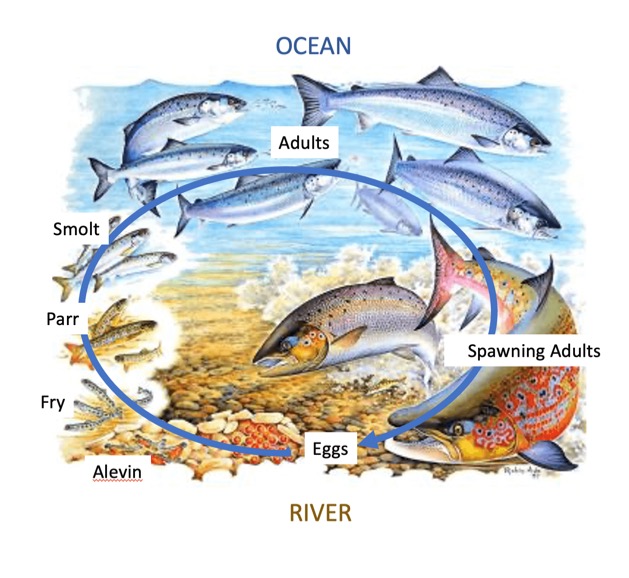01. The life cycle starts in the late spring/early summer when mature adults return to their river of origin to spawn. The females lay around 4,000 eggs in the gravel bed of the river in the autumntime. The males then fertilize them and are then covered by the females. Research has suggested that it takes approximately 3,000 eggs for a salmon to grow to a full adult male size.
02. From the in which time the eggs are laid, and then throughout the winter months, the eggs progress through a transformational period and develop into Alevin. Beyond the Alevin period, the fish then develop further into Fry. By this time, the Fry fish have developed enough to break free from the gravel bed and then escape the gravel bed to feed off the nutrients within the river.
03. As the year progresses into the Summer, the Frys feeding within the river have grown into adolescent Salmon known as Parr. A Parr is easily confirmed due to the camouflaged markings that they grow. These form on the Salmon Parr in an attempt to evade their predators while growing to a suitable size to migrate to the ocean. In the cooler environment of East Iceland, the Parr typically spend about 3-5 years in the river, reaching 10-12 cm in length.
04. The Parr transform themselves into Smolts to enable them to leave the river for the richer food resources of the sea. In the “smolting” process. the fish develop silvery skin and undergo the physiological changes needed to live in salt water. In The Six Rivers. the “run” of smolts to the estuary takes place in late Spring.
05. Once the Salmon have fully completed their smolting process and finally have the physiological capabilities to live and thrive in the ocean, they migrate down the river. Once at sea, the salmon grow significantly, and their size increases from less than 50 grams to weights exceeding 2 kilograms. More than half of the fish mature and return to spawn after just one winter. Other Salmon remain at sea for at least two winters and sometimes even three winters, on rare occasions.

